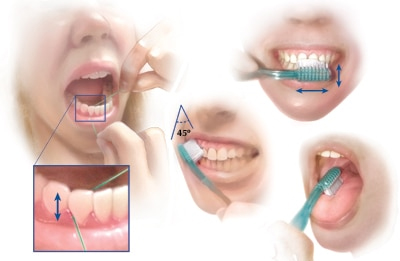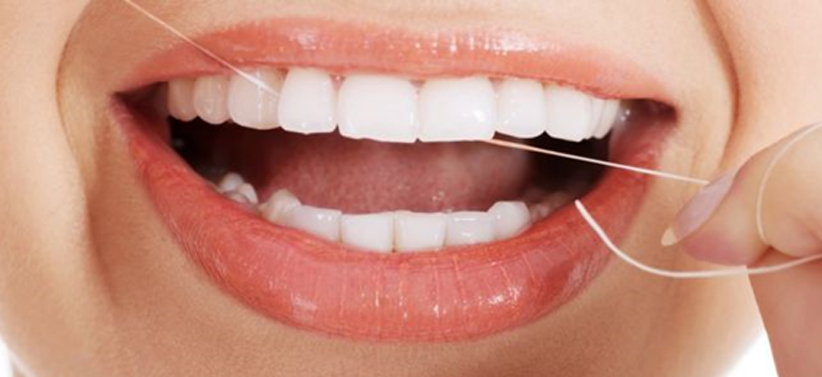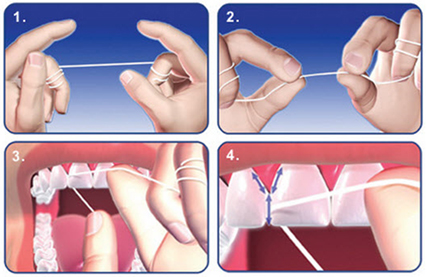The longer you live the longer you retain your teeth by taking good care of your mouth, teeth and gums. Oral health is a gateway, pathway and front door to your general health. Poor oral hygiene can increase the risk of serious systemic problems. Good oral hygiene prevent bad breath and tooth loss because of tooth decay and gum disease. The mouth is home for variety of different strains of bacteria, some of which are helpful as probiotics, while some are harmful as they cause tooth decay and gum disease.
Some easy and must to do steps help to maintain health of mouth, teeth and gums. These steps include:
- Brushing twice a day with fluoride toothpaste for at least two minutes
- Flossing in between your teeth – especially before bedtime
- Using mouth wash at least once a week
- Limiting sweets in between meals
- Visit Dentist every 6 month.
Brushing
Brushing at least twice a day using fluoride toothpaste, preferably before bed time and after having breakfast. Proper brushing technique is imperative to maintain good oral hygiene. Give proper time and attention to brushing. It is recommended to at least brush your teeth for two minutes, place your brush at gum line at a 45 degree angle, using back and forth strokes, start from buccal (outer) surfaces of upper teeth from right to left and then continuing onto outer surfaces of lower teeth from left to right. Then clean lingual (inner) surfaces of lower teeth and then upper teeth. Finally clean chewing surfaces. Do not forget to clean tongue for fresh breath.

Flossing
Flossing removes bacteria, food particles and plaque that buildup in between your teeth that you may not see and toothbrush doesn’t reach. Flossing regularly prevents buildup of tartar. Brushing alone is not effective to remove all harmful bacteria and prevent gum disease.
Plaque remain in between teeth, turns hard and become tartar which is difficult to remove by brushing only and you need to visit your dentist for scaling and polishing to get rid of tartar and calculus. Chronically unhealthy and inflamed gums cause teeth to become loose and eventually tooth loss. Good oral care routine protects against tooth decay and bleeding gums. Inflamed and bleeding gingiva is first stage of gum disease, which may cause worsening of cardiovascular and other systemic conditions.

Flossing Technique
Flossing is standard guideline approved by American Dental Association as most important part of oral care.
Some attention and proper flossing technique helps to prevent tooth decay and gum disease. Here is a proper way to floss.
- Take 18- 20 inches long floss. You can use waxed or un -waxed, mono or multi filament floss or dental tape.
- Wrap the floss around your middle finger, leaving only 1-2 inches in between to work with.
- Use your index finger and thumb to slide the floss in between your teeth following the gum line.
- Use clean section of floss for every tooth.

Benefits
- Cosmetic Benefit, beautiful smile.
- Brushing twice daily, before bed time and after breakfast, and flossing regularly ensure appealing esthetics and a Hollywood smile.
- Flossing improve your oral hygiene and make you feel cleaner. Some people think that flossing hurts and will cause more bleeding. They need to understand that thorough proper technique it will not hurt and bleeding is caused by buildup of bacteria and flossing actually removes that bacteria so it is beneficial in long run.
- Prevention of systemic diseases, especially cardiovascular diseases.
- Good oral Health boost morale, increase self-esteem and improve social interactions.
